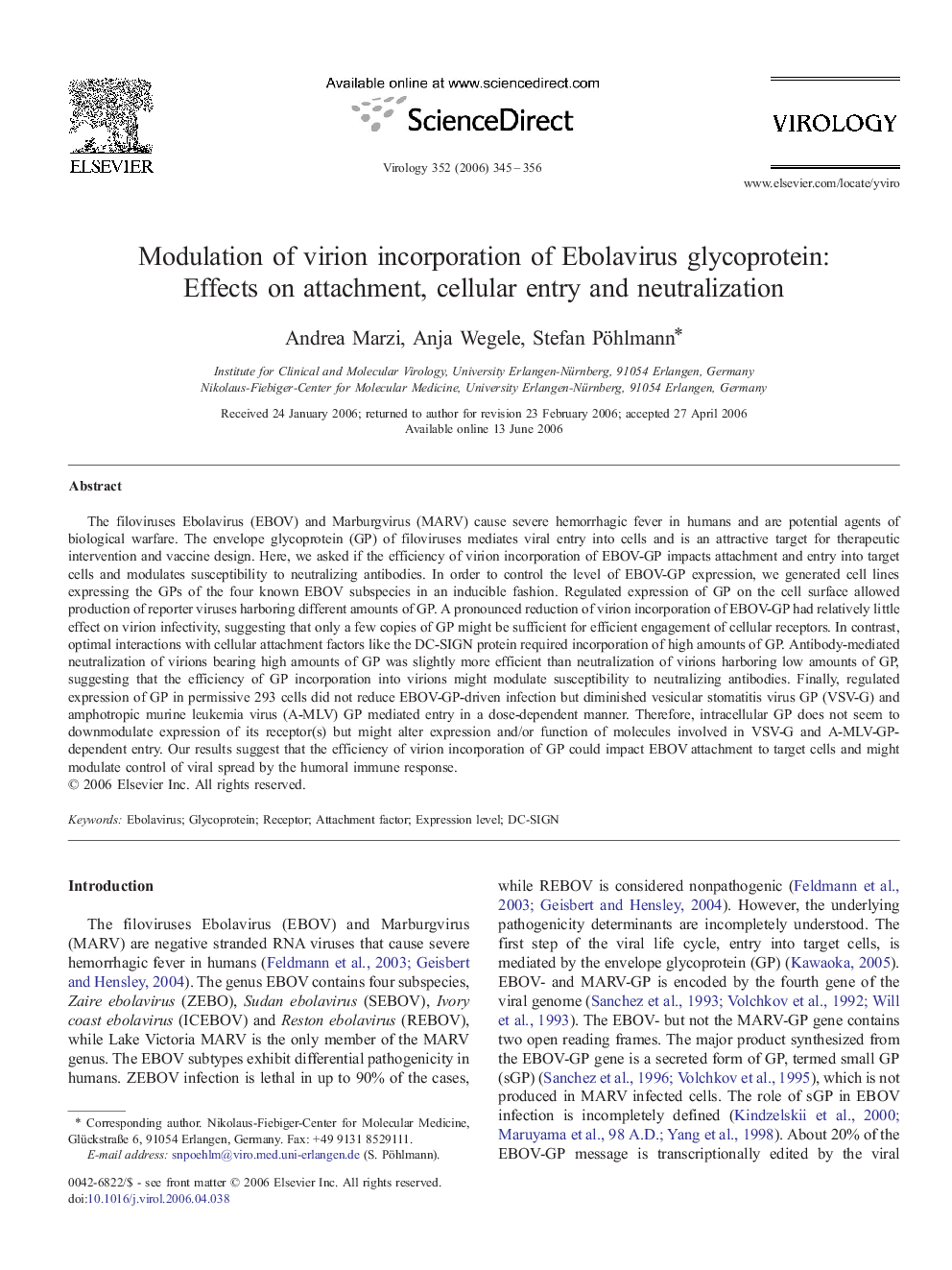| Article ID | Journal | Published Year | Pages | File Type |
|---|---|---|---|---|
| 3426622 | Virology | 2006 | 12 Pages |
The filoviruses Ebolavirus (EBOV) and Marburgvirus (MARV) cause severe hemorrhagic fever in humans and are potential agents of biological warfare. The envelope glycoprotein (GP) of filoviruses mediates viral entry into cells and is an attractive target for therapeutic intervention and vaccine design. Here, we asked if the efficiency of virion incorporation of EBOV-GP impacts attachment and entry into target cells and modulates susceptibility to neutralizing antibodies. In order to control the level of EBOV-GP expression, we generated cell lines expressing the GPs of the four known EBOV subspecies in an inducible fashion. Regulated expression of GP on the cell surface allowed production of reporter viruses harboring different amounts of GP. A pronounced reduction of virion incorporation of EBOV-GP had relatively little effect on virion infectivity, suggesting that only a few copies of GP might be sufficient for efficient engagement of cellular receptors. In contrast, optimal interactions with cellular attachment factors like the DC-SIGN protein required incorporation of high amounts of GP. Antibody-mediated neutralization of virions bearing high amounts of GP was slightly more efficient than neutralization of virions harboring low amounts of GP, suggesting that the efficiency of GP incorporation into virions might modulate susceptibility to neutralizing antibodies. Finally, regulated expression of GP in permissive 293 cells did not reduce EBOV-GP-driven infection but diminished vesicular stomatitis virus GP (VSV-G) and amphotropic murine leukemia virus (A-MLV) GP mediated entry in a dose-dependent manner. Therefore, intracellular GP does not seem to downmodulate expression of its receptor(s) but might alter expression and/or function of molecules involved in VSV-G and A-MLV-GP-dependent entry. Our results suggest that the efficiency of virion incorporation of GP could impact EBOV attachment to target cells and might modulate control of viral spread by the humoral immune response.
